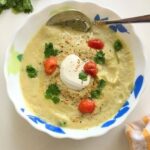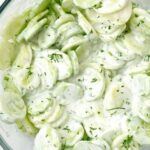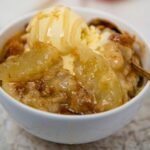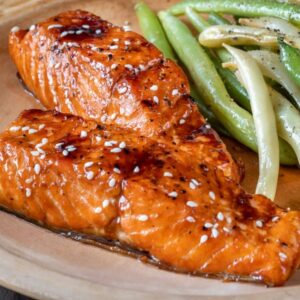
If you’re a salmon fan like me, you know just how critical cooking methods are! They change the taste and texture of your fish, either enhancing or detracting from its delectable qualities.
Everyone wants to know how to cook the perfect salmon fillet, and there are essential details to keep in mind to do so.
Timing is crucial when cooking salmon! Leaving it for too long will result in a hard, dry fish– while not cooking it long enough can make it dangerous to consume.
It’s a delicate fish and, as such, needs just the right cooking time and salmon temperature to create the rich, buttery flavor and the beautifully cooked salmon color you crave.
So what does cooked salmon look like? Read on to know when salmon is done. You’ll learn different ways to cook salmon and the traditional ways to tell when this flavorful fish is finished!
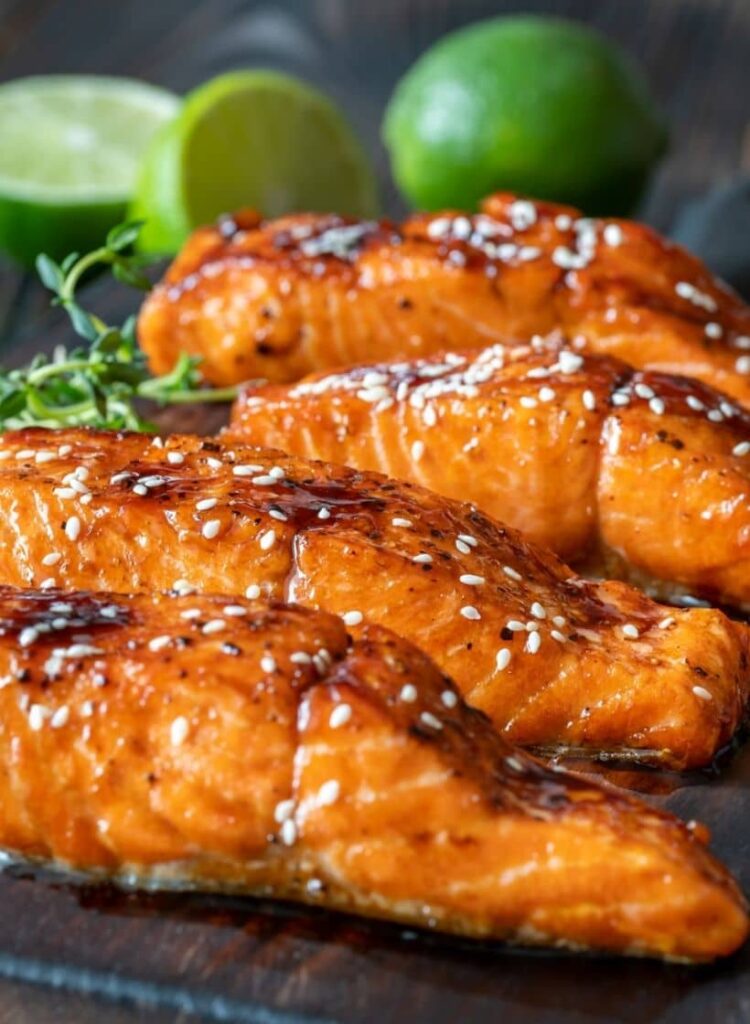
Color of Cooked vs Raw salmon
One way to tell the difference between raw and cooked salmon is its color. Raw salmon is a rich pink to bright orange color and is translucent. Raw farmed salmon tend to be lighter and pinker, while raw wild salmon is on the brighter, reddish side.
Cooked salmon turns a light whitish-pink and opaque. You will not be able to see through a fully cooked salmon. It will lose its shininess and take on a subtler hue. The fatty marbled lines of salmon will also turn white when cooked.
How to know when salmon is done?
There are several ways to know when salmon is ready for consumption! Read the following guidelines on how to tell if salmon is done.
- Examine the Color & Texture:
The color of salmon changes as it cooks. When raw, salmon will be a translucent pink or orange color. Its exterior will be a bit shiny. When cooked, salmon will become lighter. It will take on a pinkish-white color and be opaque. The lines of the fish will turn from clear to white.
When salmon is cooked, it becomes slightly firm. When gently pressed with a fork, it should flake ever so gently. If it does not flake apart and is translucent, it is undercooked. It may be overcooked if it flakes off in big chunks or requires significant pressure to flake. You want the texture to remain delicate with light flaking.
- Checking the Temperature:
The ideal salmon internal temp for a medium-rare cooked fillet is between 45-50 degrees Celsius or 110-125 degrees Fahrenheit. Using a thermometer will provide the most accurate temperature measurement. Insert the thermometer into the thickest portion of the fillet and wait until the temperature gauge has finished reading.
If you prefer a firmer, more cooked fillet, you can cook it to a slightly hotter temperature.
Be aware that salmon is a soft, delicate fish. As such, be gentle when inserting the thermometer not to destroy the integrity of the fillet.
- Use a cake tester:
Cake testers are a great cooking tool and can be used for many applications, not just testing cakes!
Cake testers are long, thin metal sticks with plastic handles. This makes them easy to insert into hot food items without burning your fingers. The thinness of the cake tester also causes minimal damage to the shape and texture of your fish, making it an excellent option for testing temperatures.
To use a cake tester, insert it into the thickest part of the salmon fillet. Leave it for 5-10 seconds and remove it. Touch the end of the stick immediately to see if it’s warm. The internal temp of salmon should make the stick warm. The fish needs slightly longer to cook through if it’s still cool.
- Butter knife method:
Butter knives are the most convenient way to test the temperature of your fish! Everyone has one in their home, and they are easy to use.
The butter knife method works similarly to the cake tester. Hold the handle, and insert the blade into the largest portion of the fish. Keep the knife there for 5-10 seconds. Remove the knife and immediately touch the edge to check its temperature. If the blade is warm, the fish is ready to eat.
While not the most exact method, butter knives provide a reasonable estimate of temperature without much fuss. Be careful when inserting the blade. You want to insert it straight down, perpendicular to the fish. This way, you will not cut the fish too much, causing separation or damage.
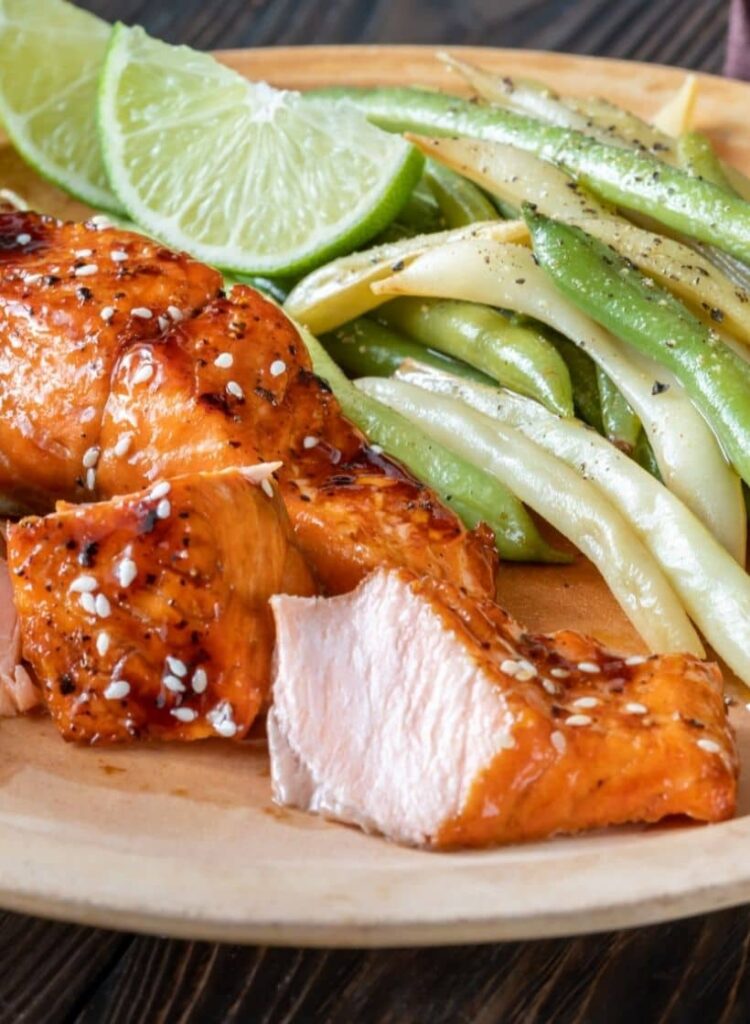
Cooking Time for Different Cooking Methods
Different cooking methods require different cooking times. Here are some guidelines on salmon cook temp depending on the method:
- 12-15 minutes baking in the oven at 350 degrees Fahrenheit
- 10-12 minutes on a grill at medium heat, or 6-8 minutes at hot heat (450-500 degrees Fahrenheit)
- 5-7 minutes sauteeing on medium heat undisturbed
Can you eat undercooked salmon?
It is not recommended to eat undercooked salmon. This increases your chances of food poisoning due to harmful bacteria.
Some salmon, such as the type you see in sushi or sashimi, is specially treated to prevent food-borne illnesses. However, salmon fillets meant for cooking are usually fresh and do not undergo the same process.
How to store cooked salmon?
Follow these steps to ensure proper storage of cooked salmon:
- Let the salmon reach room temperature.
- Cover in plastic wrap entirely or place in an airtight container.
- Place it at the back of your fridge or in the freezer.
Cooked salmon can last 2-4 days in the fridge and 4-6 months in the freezer. Make sure to let it thaw for 24 hours in the refrigerator before reheating and consuming frozen, cooked salmon.
Tips for Perfect Salmon
Cooking the perfect salmon takes some effort and knowledge. It is important to follow the correct cooking descriptions followed above to not over or undercook your fillet. Here are some additional tips to help you create a delicious tasting salmon:
- Cook with the fillets skin-down to start. You do not need to turn the fish when cooking it, but you can if you are worried about it cooking evenly.
- Let the skin crisp up. This will ensure the bottom of your fish is cooked through and give the skin a nice crunchy texture.
- Add herbs, lemon, and butter! Butter enhances the rich, oily qualities of salmon. Coriander, parsley, basil, and thyme make excellent additions to the flavor of this fish. Coating your fish in seasonings will also protect the exterior from drying up.
- When given the option, bake your salmon rather than pan-frying it. Due to slower cooking, it will maintain its health properties and complete flavor profile.
Mistakes to Avoid When Cooking Salmon
It’s crucial to know how to cook salmon properly to avoid mistakes. Here are some tips to help ensure a perfectly cooked fillet:
- Don’t season the fish too soon before cooking. It is best to season it for at least 15 minutes before fully soaking up the flavors of the accouterments.
- Don’t cook the fillet skin-side up. It will not crisp up, and the fish will not cook evenly.
- Don’t Leave the fish in the oven or on the pan too long. It is best to remove the fish and test the temperature then cook it too long. You can always pop it back in the oven if needed. However, cooking it too long will dry the fish and the flavor.
Frequently Asked Questions
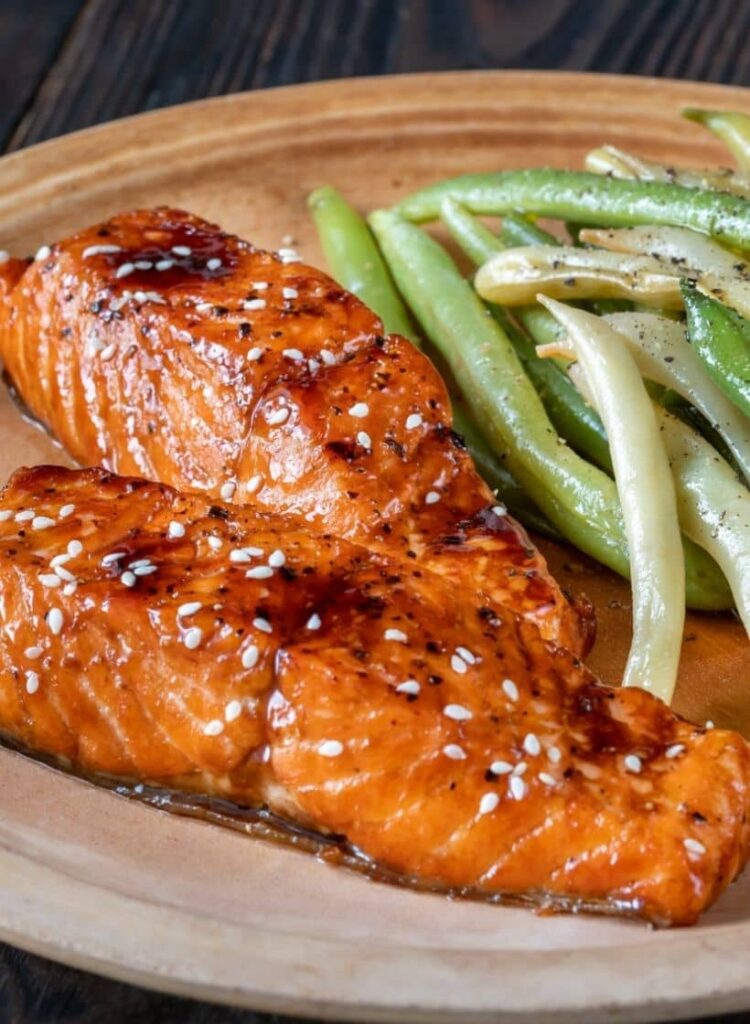
1. Is it OK for salmon to be pink in the middle?
It is OK for salmon to be a little pink in the middle as long as it is fully cooked on the outside. Salmon should be a whitish-pink and opaque all around the exterior of the fish.
If there are areas that remain uncooked, still it in the oven or panfry it longer. This will lower the chances of any food-borne illnesses.
2. How long does salmon take to get done?
Salmon is a quick-cooking fish. It takes anywhere from 5-20 minutes, depending on the cooking method. Sauteeing can be the fasting method and take 5-10 minutes. Baking it on low heat will take up to 20 minutes.
If you want to know how to tell if salmon is done, you can use a butter knife or cake tester to check if the middle is warm. You can also use a thermometer to test the internal temperature more accurately.
3. What should the internal temperature of cooked salmon be
If you are wondering how to tell if salmon is cooked, you should test the temperature.
For a medium-rare salmon, the internal temperature should be between 45-50 degrees Celsius or 110-125 degrees Fahrenheit. This is the ideal temperature for cooked salmon.
If you prefer your salmon on the well-done side, cook the fish for longer and you’ll want the interior to be slightly warmer.
Check also:
- How To Reheat and Store Honey-Baked Ham
- How To Reheat Rotisserie Chicken
- How to Cook Frozen Shrimp?
- Ways to Reheat Crab Legs?
- How Long Does It Take to Boil Potatoes?
This citrusy, buttery recipe is sure to delight your tastebuds! Not only is it quick and easy to prepare, but baking it in the oven makes for a healthy meal. Baking is the best way to preserve nutrients and flavors. So follow these instructions to find culinary bliss! 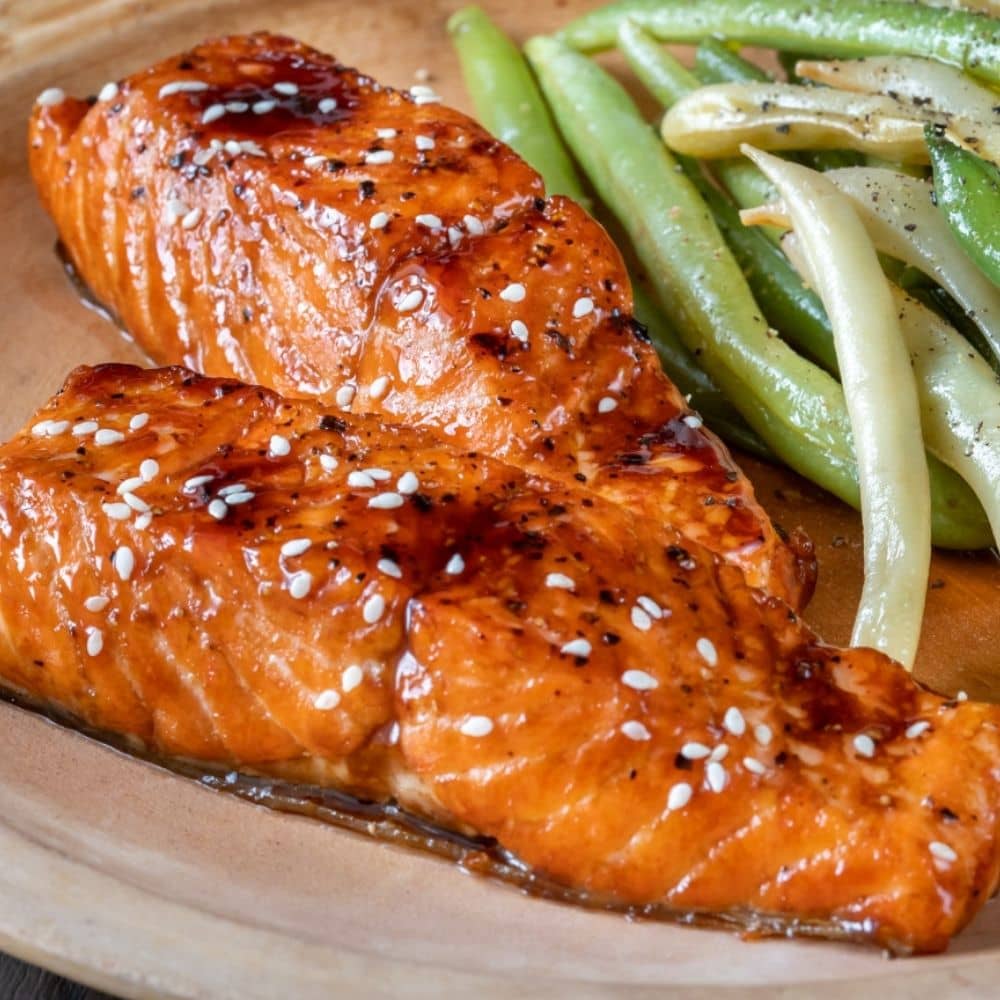
How to Know When Salmon is Done (Tips & Tricks)
Ingredients
Instructions
Ensure your salmon is a light, pinkish-white color and at the correct temperature inside before serving it.
Follow the instructions above and cook away! I am confident you can create the perfect salmon and enjoy it to the fullest! Bon appetit!



